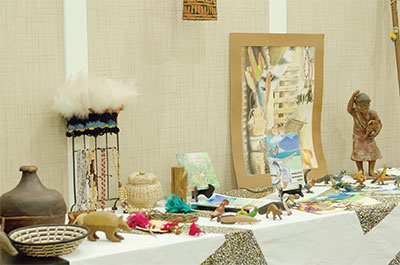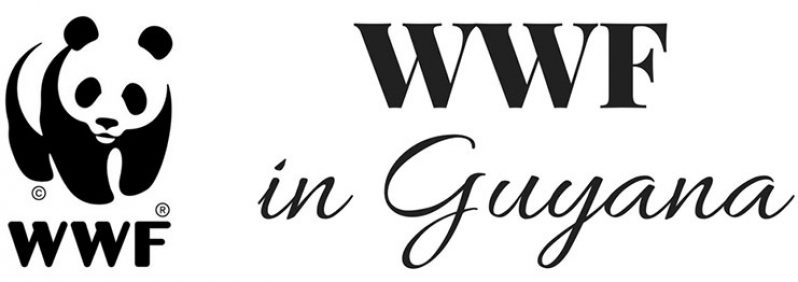LAST WEEK, the World Wildlife Fund (WWF) Country Office in Guyana and the North Rupununi District Development Board (NRDDB) organized a week-long charrette to plan for the expansion of livelihoods that are set to use the upcoming North Rupununi Wetlands (NRW) conservation status to brand and market local products.
The charrette which was conducted in the North Rupununi during the third week of February, brought together a dedicated team which comprised 40 local and international experts who

visited and worked with representatives of the 20 NRDDB communities (including Toshaos) of North Rupununi Wetlands. It concluded with a debriefing exercise at Karanammbu, North Rupununi.
The Cherrette, as outlined by Ms. Annalise Bayney of the Protected Areas Commission, is a very intense period of planning, bringing together targeted sectors of the community in one place, to tackle a ‘burning issue’ or questions. There is brainstorming with the local communities, using all the expertise that’s available to them, with the aim of coming up with viable solutions for that specific problem or situation. Targeted sectors included: miners, operators, citizen-partners, among others.
Such an approach, the WWF considers critical, if people are to live in harmony with their resources and support the creation and maintenance of an effectively conserved area on their traditional lands.
Additionally, this move would grant economic development for the area and its inhabitants, based on the principle of using natural resources in a sustainable way, the WWF Guianas Country Office in Guyana says.
Conservation Areas
As a signatory to the United Nations Convention on Biological Diversity (CDB), 0Guyana has committed to meet a target of conserving 17% of its land area by 2020. And already, Guyana’s National Protected Area System (NPAS) and the Wai Wai’s Konashen Community Owned Conservation Area currently protect 8.3% of Guyana’s Territory.
While this is so, one of Guyana’s Nationally Determined Contributions to the Paris Climate Agreement (PCA) is a conditional commitment by His Excellency President David Granger to expand the NPAS by 2 Million hectares if the necessary support is provided. This expansion, a release from the World Wildlife Fund (WWF)-Guianas, says, would meet Guyana’s commitment to both the UNCBD and the Paris Agreement.
Over the last two decades, twenty communities and 7,000 people constituting the North Rupununi District Development Board (NRDDB) have been repeatedly advocating for a conservation area to protect the North Rupununi Wetlands. Taking note of President Granger’s commitment, they are hopeful that their long-anticipated desire can now be realized.
Additionally, it has come as a breath of fresh air that the WWF has embarked on providing technical support to the NRDDB, with the aim of facilitating discussions among those communities, about the delineation and management of a protected area in the North Rupununi.
Such a move, the WWF said, would begin to meet Guyana’s Commitment and establish a new model for conserving indigenous and state lands in the wetlands of the North Rupununi, in which the communities and the Protected Areas Commission (PAC) would collaborate closely and share responsibility.
North Rupununi Wetlands
North Rupununi Wetlands (NRW) are a unique and highly diverse ecosystem that includes seasonally flooded forests, wetlands and savannahs that are extremely important for the biodiversity and ecosystem services that they provide to local communities and the nation. Of interest, the Rupununi River and its tributaries store enormous quantities of water in the rainy season and incredibly, slowly releases it into the Essequibo, limiting the severity of flooding events in coastal Essequibo communities.
A Green Economy
The cherrette’s interventions, the WWF observed, are directly in line with Guyana’s Vision of a green economy, and can serve to further the nation’s development along this pathway, it said.
It focused on conservation, compatible livelihoods that people in the North Rupununi are already engaged in, in order to identify strategic interventions that foster enterprise growth. The goal is to increase jobs through improved business viability and profitability and deliver economic benefits that are enhanced by the North Rupununi Wetlands conservation status.
The WWF noted that there is already a growing nature-based tourism industry in the area, with tourist lodges at the villages of Surama, Rewa, Yupukari, Apoteri and Karanambu Ranch and Rockview Lodge that would benefit all from the creation of a protected area.
“Tourism activities that rely on healthy wetlands include birding, wild-life viewing, catch and release sport fishing, and adventure river trips, and are already an important contributor to the local economy,” the release outlined. Other conversation-compatible activities in the region include: cultivation and agro-processing of cassava a. cashew-nuts and peanuts; free range cattle ranching and timber and non-timber forest products (medicinal remedies, cosmetics, craft and home furnishing.
Debriefing forum
The week’s charrette concluded with a symposium, hosted by the WWF, under the theme: “Sustainable Livelihoods within a Green Economy.” Held at the Guyana Marriott Hotel last Friday, it served to introduce the charrette team and enlightened stakeholders about the 20 NRDDB communities, sharing with them, plans for fostering their enterprise development, while giving them an alternative to mining, the wildlife trade or wage employment in Lethem or Brazil.
Keynote speaker was Vice President and Minister of Indigenous People’s Affairs, Hon. Sydney Allicock, MP. Other speakers included: Mr. Chuck Hutchinson, WWF Guianas; Eco-Tourism Guru, Mr. Jan Wigsten of Nomadic Journeys, Sweden; Ms. Lesley de Souza PhD; from the Field of Museum, Chicago; Paulette Allicock and representatives of local institutions, Macushi Research Unit, Surama, Region 9 and Michael Williams, Vice Chair of the NRDDB.
WWF-Guianas is part of one of the world’s leading conservation organizations with a mission to stop the degradation of the earth’s natural environment and to build a future in which humans live in harmony with nature…



.jpg)









